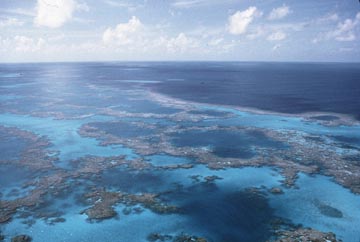State-Appointed Hearing Officer Affirms KAHEA's Standing in Historic Decision
Investigation of HIMB Research Permit Violations for Northwestern Hawaiian Islands Expanded,
Contested Case Hearing Officer Recommends Long-Time Advocate, KAHEA, Be Party to the Case
HONOLULU – In a historic move, citing KAHEA’s long history of actions to protect the NWHI, state-appointed hearing officer for the Board of Land and Natural Resources, Louis Chang, recommended on Friday that the Board grant KAHEA: The Hawaiian-Environmental Alliance standing as a party to a landmark case concerning the first recorded major violations of the state’s new stringent Northwestern Hawaiian Island Refuge rules. “The Northwestern Hawaiian Islands are a public trust resource, and we welcome this affirmation of our kuleana to ensure that the strict rules we worked so hard to establish are fully enforced so that this fragile and unique place is well-protected,” said Vicky Holt-Takamine, KAHEA Board of Directors President.
Federal and state officials have testified that in 2006, during one of the first major research expeditions permitted to conduct extractive activities in the state’s newly created no-take Refuge, scientists from the Hawai’i Institute of Marine Biology (HIMB) — including a former state Department of Land and Natural Resources employee –cultivated coral disease bacteria in the NWHI, transported bacteria within and outside of the NWHI, and attempted to bring bacteria cultures to the Main Hawaiian Islands, in violation of the state’s strict permit requirements and state and federal quarantine and customs laws regarding the transport and import of disease organisms. Officials testified that an HIMB disease researcher harvested, cultivated, and transported live coral within the NWHI, dumping wastewater from the coral tank overboard as they traveled between islands. These actions, which occurred in 2006, represent serious violations of state permit conditions designed to protect the NWHI from the spread of disease and invasive species, as well as state and federal laws.
The NWHI Refuge specifically establishes a ‘do no harm’ standard for all activities there,” said Louis “Buzzy” Agard, former NWHI resident who fished commercially there and later fought for strong conservation measures. “This should mean human activity in the NWHI is strictly limited so as to leave no human footprint on what is left of this delicate marine ecosystem.” According to Agard, “If this were a fishing violation, they’d throw the book at them. But this is a case of colleagues and friends of DLNR staff. There seems to be a double standard for these violators.”
Efforts by the Hawaii Institute of Marine Biology (HIMB) to block enforcement of strict state rules protecting the Northwestern Hawaiian Islands State Refuge were dealt a blow with the publication of the recommendation on Friday indicating that — as per KAHEA’s request — the investigation into apparently illegal activities would now be broadened and that KAHEA has standing in the case. There have been persistent rumors, however, of back-room attempts to lobby Board members regarding this case and to encourage DLNR to take extraordinary measures to overturn the hearing officer’s recommendation.
“This is historic,” said Miwa Tamanaha, Executive Director of KAHEA. “We have serious allegations of research permit violations in the face of more people and research vessels heading to the NWHI. What is decided here in this first enforcement action against research permit violations will affect all future decisions about how to fully protect this uniquely Hawaiian no-take marine environment.”
The Land Board is expected to rule on the recommendation March 7, 2008.
You can see the full case filings and get more information at www.KAHEA.org
(top photo from keoki, and bottom photo from kahea.org.)







